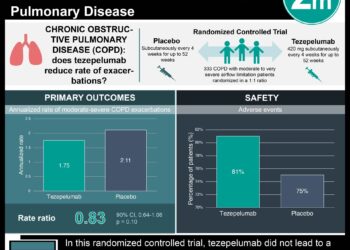The Key Factors for Getting Accepted into Medical School
Applying to medical school can be a daunting process. With limited spots available and intense competition, it’s essential to understand the key factors that play a crucial role in the acceptance process. In this article, we will delve into the various aspects that can make or break your chances of getting accepted into medical school.
The Key Factors for Medical School Acceptance
When it comes to medical school acceptance, two factors are considered paramount – GPA and MCAT scores. These metrics provide insight into an applicant’s academic capabilities and potential for success in medical school.
Understanding the Importance of GPA and MCAT Scores
Your grade point average (GPA) is a reflection of your academic performance throughout your undergraduate years. Medical schools look for applicants with a strong GPA, as it demonstrates consistency, discipline, and a solid foundation in scientific knowledge.
Having a high GPA indicates that you have excelled in your coursework, showing your commitment to learning and your ability to handle the demanding curriculum of medical school. It also reflects your ability to manage your time effectively, balance multiple responsibilities, and maintain a strong work ethic.
Similarly, the Medical College Admission Test (MCAT) is designed to assess your understanding of scientific concepts, critical thinking skills, and problem-solving abilities. A good MCAT score showcases your aptitude for the rigorous coursework that lies ahead in medical school.
Scoring well on the MCAT demonstrates your ability to analyze complex information, think critically, and apply your knowledge to solve real-world problems. It also indicates your ability to handle the pressure of high-stakes exams, a skill that is crucial in the medical field.
Average GPA and MCAT Score for Medical School Admission
While the ideal GPA and MCAT scores can vary across different medical schools, it is essential to have a general understanding of what they consider competitive.
For most medical schools, the average GPA of accepted students typically falls within the range of 3.6 to 3.8. However, keep in mind that some highly competitive institutions may have higher expectations, requiring a GPA of 3.8 or higher.
Having a GPA within or above this range demonstrates your ability to excel academically and compete with other highly qualified applicants. It shows that you have consistently performed well throughout your undergraduate years, which is a strong indicator of your potential success in medical school.
As for MCAT scores, the average accepted score ranges from 510 to 515. Achieving a score within this range indicates that you have a solid understanding of the scientific concepts tested on the MCAT and possess the critical thinking skills necessary to excel in medical school.
Scoring within or above this range demonstrates your ability to analyze complex information, think critically, and apply your knowledge effectively. It also showcases your dedication to preparing for the MCAT and your commitment to pursuing a career in medicine.
While GPA and MCAT scores are essential factors in the medical school admissions process, it’s important to remember that they are not the only criteria considered. Medical schools also evaluate applicants based on their extracurricular activities, letters of recommendation, personal statements, and interviews. These factors provide a more holistic view of an applicant’s character, motivation, and potential to contribute to the medical profession.
Exploring Medical School Acceptance Rates
When it comes to pursuing a career in medicine, one crucial aspect that aspiring doctors must consider is the acceptance rate of medical schools. This percentage represents the likelihood of being admitted to a particular institution, and it plays a significant role in shaping the dreams and aspirations of countless individuals.
While the acceptance rates of medical schools can fluctuate from year to year, there are certain institutions that have consistently maintained higher acceptance rates than others. These schools have become known for their willingness to admit a greater percentage of applicants, providing hope and opportunities to aspiring doctors.
Which Medical Schools Have the Highest Acceptance Rates?
Among the medical schools with higher acceptance rates, the Medical College of Wisconsin stands out as a beacon of opportunity. With its commitment to fostering a diverse and inclusive student body, this institution has been known to welcome a significant number of aspiring doctors into its halls.
Another medical school that has garnered attention for its higher acceptance rate is the University of Nevada School of Medicine. This institution, located in the vibrant city of Las Vegas, has been recognized for its dedication to training competent and compassionate physicians who can serve the unique healthcare needs of the state.
Additionally, the University of Oklahoma College of Medicine has established itself as a medical school with a higher acceptance rate. With its emphasis on community engagement and a comprehensive curriculum, this institution has attracted aspiring doctors from various backgrounds, providing them with the opportunity to pursue their passion for medicine.
Which Medical Schools Have the Lowest Acceptance Rates?
On the other end of the spectrum, there are several medical schools that boast exceptionally low acceptance rates. These institutions are highly competitive and admit only a small fraction of applicants, making the journey to becoming a doctor even more challenging.
Harvard Medical School, renowned for its excellence in medical education and groundbreaking research, is one such institution with an extremely low acceptance rate. Every year, thousands of hopeful applicants aspire to join the ranks of this prestigious institution, but only a select few are granted the opportunity.
Similarly, the Stanford School of Medicine, located in the heart of Silicon Valley, is known for its rigorous admissions process and low acceptance rate. With its emphasis on innovation and interdisciplinary collaboration, this institution attracts some of the brightest minds in the field of medicine.
Another medical school with a notoriously low acceptance rate is the Johns Hopkins School of Medicine. As a world-renowned institution, it has a long-standing reputation for producing exceptional physicians and conducting groundbreaking medical research. The competition to gain admission to this esteemed institution is fierce, with applicants from all over the world vying for a chance to be a part of its legacy.
Understanding the acceptance rates of medical schools is crucial for aspiring doctors. It allows them to make informed decisions about where to apply and helps them navigate the competitive landscape of medical education. While acceptance rates should not be the sole determining factor in choosing a medical school, they provide valuable insights into the level of competition and the potential challenges that lie ahead.
Unveiling the Average MCAT Score Trends
Keeping track of MCAT score trends can provide valuable insights into the competitive nature of medical school admissions. Here, we explore the most recent trends and what they mean for aspiring medical students.
What You Need to Know About the Latest Average MCAT Scores
In recent years, there has been an upward trend in average MCAT scores among applicants. This signifies that the applicant pool is becoming increasingly competitive, and medical schools are looking for individuals who stand out academically.
Analyzing MCAT Scores at Top Medical Schools
If you aspire to attend one of the top medical schools in the United States, it’s essential to understand the range of MCAT scores among these institutions. This will give you a clearer idea of where you stand in comparison to other applicants.
Discovering the Range of Median MCAT Scores at Different Medical Schools
Medical schools such as Harvard, Stanford, and Johns Hopkins typically have median MCAT scores in the range of 518 to 520. Keep in mind that these are highly competitive institutions, and scoring within or above this range will significantly strengthen your application.
Ranking the Best Medical Schools in the U.S.
Choosing the right medical school is a crucial decision that can shape your future career as a healthcare professional. Here, we rank some of the best medical schools in the United States based on various factors such as reputation, faculty, facilities, and research opportunities.
Decoding the Average GPA for Medical School Admission
Your GPA plays a vital role in the medical school admissions process. Let’s delve into what you need to know about the average GPA required to get accepted.
What GPA Do You Need to Get into Medical School?
Generally, a solid GPA for medical school admission ranges from 3.6 to 3.8. However, it’s important to note that medical schools consider various factors holistically, and a lower GPA can be compensated by a strong MCAT score or other exceptional achievements.
Exploring the Mean GPA at Different Medical Schools
The mean GPA at top medical schools often hovers around 3.9, with institutions such as Yale, Columbia, and the University of Pennsylvania consistently attracting candidates with exceptional academic records. However, it’s important to remember that a high GPA alone does not guarantee acceptance; extracurricular activities, research experience, and personal statements also play a significant role.
The Most Influential Factors in Medical School Admissions
While GPA and MCAT scores are indeed essential, it’s crucial to recognize that medical school admissions are not solely based on academic achievements. Other factors come into play, including extracurricular involvement, research experience, recommendation letters, personal statements, and interviews.
Admissions committees evaluate applicants holistically to ensure they possess the necessary qualities and skills to succeed in their medical careers. Therefore, it’s important to build a well-rounded application that reflects your passion for medicine, interpersonal skills, and leadership abilities.
In conclusion, getting accepted into medical school requires a combination of strong academic performance, competitive test scores, and a variety of other factors that showcase your unique qualities. By understanding the key factors for medical school acceptance and strategically preparing your application, you can maximize your chances of realizing your dream of becoming a physician.


![siRNA against antithrombin alleviates symptoms of hemophilia [PreClinical]](https://www.2minutemedicine.com/wp-content/uploads/2015/04/clot-CCWiki-350x250.jpg)




